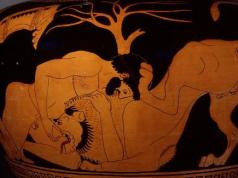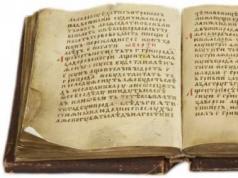August 1- Logistics Day of the Armed Forces of the Russian Federation.
August 2- Day of the Airborne Troops.
August 6- Day of the Railway Troops.
August 9- Day of military glory of Russia. The day of the first naval victory in Russian history of the Russian fleet under the command of Peter I over the Swedes at Cape Gangut (1714).
12th of August- Day of the Air Force. This day marks the 100th anniversary of the Russian military aviation.
August 16, 1812 began a defensive battle of the Russian army against the Napoleonic troops in the Smolensk region.
August 16, 1942 The heroic defense of Novorossiysk began.
August 19- Russian Air Force Day.
August 19, 1917 Marshal of the Communications Troops A.I. Belov.
August 20, 1942 troops of the 5th Army liberated the city of Mozhaisk.
August 20, 1812 Emperor Alexander I appointed M.I. Kutuzov.
August 21, 1957 at the Baikonur Cosmodrome, the first successful test of the R-7 intercontinental multistage rocket developed by S.P. Korolyov.
August 21, 1937 The USSR signed a non-aggression pact with the Kuomintang government of China. 3,665 Soviet military volunteers participated in the anti-Japanese war of the Chinese people (1937-1941), 211 of them died or died of wounds. 14 pilots became Heroes of the Soviet Union. By 1940, 986 Japanese aircraft had been destroyed.
August 22- Day of the State Flag of Russia. The holiday was established by the Decree of the President of the Russian Federation in 1994 in connection with the restoration of the historical Russian tricolor state flag, covered with the glory of many generations of Russians, and in order to educate the present and future generations of Russian citizens respectful attitude to state symbols.
August 23- Day of military glory of Russia. Day of the defeat of the Nazi troops by the Soviet troops in the Battle of Kursk (1943).
August 23, 1552 the regular siege of Kazan by the army of Tsar Ivan IV began.
August 24, 1382 During the campaign of Khan Tokhtamysh to Ryc, Russian soldiers who defended Moscow under the command of Prince Ostey used artillery for the first time.
August 24, 1612- the defeat of the second militia, led by D. Pozharsky and K. Minin, of the troops of Hetman Khodkevich near Moscow.
August 27, 1942 The Sinyavino operation of the Volkhov and Leningrad fronts began. The purpose of the operation was to break the blockade of Leningrad. The beginning of the operation coincided with the preparation by the Germans of the last attempt to storm Leningrad. In fierce oncoming battles in the forests and swamps in the vicinity of the village of Sinyavino, both sides lost their offensive potential. The front line has stabilized in the same place.
August 29, 1937 Admiral of the Fleet F.N. Gromov. In 1992–1997 - Commander-in-Chief of the Russian Navy.
August 30, 1757 during the Seven Years' War of 1756-1763 in the battle of Gross-Jegersdorf, the Russian army (55 thousand people) under the command of Field Marshal S.F. Apraksina defeated the Prussian troops (24 thousand people) under the command of X. Lewald.
August 1 - Collector's Day.
Cash collection (from the Italian incassare - to put in a box) - this service collects and transports cash, foreign currency and other valuables to the cash desk of the Savings Bank.
On August 1, 1939, a cash collection service was established in the USSR under the country's financial body - the State Bank of the USSR. The need to move labor equivalents, which are material values, including money, humanity arose a long time ago. Back in the 8th-9th century in Rus', guards were always present at the trade caravans of princes and boyars - the prototype of the current collectors.
August 2 - Day of the Airborne Forces (Day of the Airborne Forces)
![]() Most of the military-patriotic films in the Soviet era were associated with the Airborne Forces (VDV) and this is understandable, people serving on the verge human capabilities deserve and deserve to be treated with respect. At the same time, this extreme lifestyle does not belong to one's own whims, but is aimed at protecting our homeland and maintaining peace in the world.
Most of the military-patriotic films in the Soviet era were associated with the Airborne Forces (VDV) and this is understandable, people serving on the verge human capabilities deserve and deserve to be treated with respect. At the same time, this extreme lifestyle does not belong to one's own whims, but is aimed at protecting our homeland and maintaining peace in the world.
The Airborne Forces (VDV) were separated into a separate structure after the events of August 2, 1930 - when a group of 12 people was parachuted from an aircraft during a planned exercise of the Air Force of the Moscow Military District near the city of Voronezh. This example showed all the advantages of an instant operational response and a change in the position of forces on a fictitious battlefield, whether it be the front line or the rear of the enemy. On August 2, 1930, the day of the Paratrooper - Airborne Forces began to be celebrated.
Events that took place on August 3 in the world, in different years
1492 (519 years) - COLUMBUS, an Italian navigator in the service of the United Kingdom of León and Castile, sailed on the "Santa Maria" from the Spanish port of Palos in search of a sea route to India, but he discovered America. His squadron consisted of three small ships.
1546 (465 years) - French publisher Etienne Dolet was hanged for publishing the works of the humanists.
1596 (415 years) - German astronomer David FABRITIUS discovered the first variable star - the World of Kita.
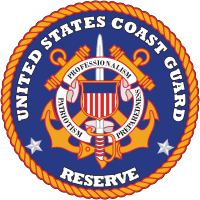 The US maritime border is one of the longest in the world. Therefore, the need to create a service responsible for the security of the marine area adjacent to the coast of the United States, the country's leadership understood from the very day the state was created. On July 4, 1790, the US Congress decided to create its own fleet. This date is also considered the birthday of the US Coast Guard.
The US maritime border is one of the longest in the world. Therefore, the need to create a service responsible for the security of the marine area adjacent to the coast of the United States, the country's leadership understood from the very day the state was created. On July 4, 1790, the US Congress decided to create its own fleet. This date is also considered the birthday of the US Coast Guard.
Events that took place on August 5 in the world, in different years
1420 - The Czech Taborites put forward their program ("12 Prague articles"), requiring the destruction of luxury, moral evil, the abolition of icon veneration.
1583 - English navigator Humphrey Gilbert declared the island of Newfoundland the property of Britain and founded the first settlement there (the first English colony in North America).
1699 - On August 5-7, the first review parade and the first maneuvers of the Russian fleet on the roadstead of Taganrog took place.
 The Day of the Railway Troops of the Russian Federation was established by the Decree of the President of Russia "On the Establishment of the Day of the Railway Troops" in 1996. And it is celebrated on August 6 every year. The history of the railway troops dates back to August 6, 1851, when Tsar Nicholas I established the Moscow-St. Railway. As part of this road, for its protection and equipment, military formations were created, which later turned into railway troops. After some time, similar formations appeared on all Russian railways.
The Day of the Railway Troops of the Russian Federation was established by the Decree of the President of Russia "On the Establishment of the Day of the Railway Troops" in 1996. And it is celebrated on August 6 every year. The history of the railway troops dates back to August 6, 1851, when Tsar Nicholas I established the Moscow-St. Railway. As part of this road, for its protection and equipment, military formations were created, which later turned into railway troops. After some time, similar formations appeared on all Russian railways.
Events that took place in the world, August 7 in different years
1560 - Tsar Ivan the Terrible ordered his closest relatives (children and brother) to hastily build palaces in Moscow.
1620 - Katharina Kepler is accused of witchcraft.
1679 - The first ship was launched at Niagara, which began sailing on the Great Lakes.
1714 - (July 27, old style) Gangut battle
1714 - The expedition of Ivan Buchholz left Tobolsk for the development of Siberia (Omsk was later founded by this expedition).
1720 - (July 27, old style) Battle of Grengam
August 8 - Day of Signal Corps of the Armed Forces of Ukraine
The Day of Signal Corps of the Armed Forces of Ukraine was established by the Decree of the President of Ukraine in 2000. It is celebrated on August 8 every year. The establishment of the holiday of the military signalman shows the most important role that communications played and continues to play in the army. Communication is the foundation of successful combat operations.
The basis for the establishment of the Day of Signal Corps was the order of August 8, 1920 on the creation in Kyiv in the former Konstantinovsky Junker Military School of military engineering courses. Every year the number of personnel of the signal troops and their equipment grew. These factors show the importance of communications in warfare. During the Civil War, the number of signalmen was no more than 3% of the total number of personnel, by the beginning of the Great Patriotic War this figure had grown to 5%, at the end of the war it was almost 10%. And in modern conditions, the number of signal troops continues to grow, despite the introduction of modern computer technology.
At present, the Signal Corps of Ukraine is a reliable communication on modern, high-speed equipment.
Day of military glory of Russia - victory at Cape Gangut
 August 9 is one of the glorious days in the history of Russia. On August 9, 1714, a naval battle took place between the Swedish and Russian squadrons, in which the Russians won a complete victory. The greatness of this for Russia also lies in the fact that this is the first naval battle that was won using the regular navy that Peter I so stubbornly created.
August 9 is one of the glorious days in the history of Russia. On August 9, 1714, a naval battle took place between the Swedish and Russian squadrons, in which the Russians won a complete victory. The greatness of this for Russia also lies in the fact that this is the first naval battle that was won using the regular navy that Peter I so stubbornly created.
The Battle of Gangut took place during the Northern War, which was waged by Sweden and Russia for almost 20 years. By 1714, Russia occupied the central and southern parts of Finland, which were then under the rule of Sweden. In order to consolidate land victories and completely resolve the issue of access to the Baltic Sea, it was necessary to defeat the Swedish fleet, which at that time was considered the most powerful in the world. By 1714, a fleet no weaker than the Swedish one had already been formed in the Baltic. According to the canons of that time, it consisted of a rowing fleet - a galley, and a sailing fleet, which consisted mainly of frigates.
 Independence Day of their country, the inhabitants of Ecuador celebrate August 10. The territory of Ecuador has been under the rule of some state since ancient times. At first, Ecuador was part of the Mayan empire, then they were replaced by the Incas, and in the 16th century they were conquered by the conquistadors led by Francisco Pizarro. And only on August 10, 1809, Ecuador became an independent state.
Independence Day of their country, the inhabitants of Ecuador celebrate August 10. The territory of Ecuador has been under the rule of some state since ancient times. At first, Ecuador was part of the Mayan empire, then they were replaced by the Incas, and in the 16th century they were conquered by the conquistadors led by Francisco Pizarro. And only on August 10, 1809, Ecuador became an independent state.
The beginning of the 19th century was marked by a broad national liberation movement directed against Spanish rule. The symbol and leader of this struggle was Simon Bolivar. During this period, many Latin American countries gained their independence.
On Independence Day, in the capital of the country, the city of Quito, a military parade, processions, various cultural and entertainment events are held, after which festivities begin.
 The Parliament of the Republic of Armenia has included a new holiday in the calendar of holidays and memorable dates - National Identity Day. It is celebrated on August 11th. As planned by the parliamentarians, this day should remind the Armenians of the times when their state was formed. Armenian historians say that ancient chronicles say that on August 11, 2492 BC. the progenitor of the Armenians - Hayk, defeated the army of the Assyrian ruler Bel, and allowed the Armenians to create their own state. In ancient times, this holiday was celebrated for several days, while drinking and eating in moderation was considered good form. Those who got drunk were looked upon with contempt and indignation.
The Parliament of the Republic of Armenia has included a new holiday in the calendar of holidays and memorable dates - National Identity Day. It is celebrated on August 11th. As planned by the parliamentarians, this day should remind the Armenians of the times when their state was formed. Armenian historians say that ancient chronicles say that on August 11, 2492 BC. the progenitor of the Armenians - Hayk, defeated the army of the Assyrian ruler Bel, and allowed the Armenians to create their own state. In ancient times, this holiday was celebrated for several days, while drinking and eating in moderation was considered good form. Those who got drunk were looked upon with contempt and indignation.
With such undertakings, the leadership of Armenia strives to revive the ancient customs and holidays, and thereby try to unite all the Armenians who are scattered all over the world.
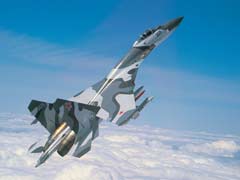 Air Force Russian Federation are a separate type of the Russian Armed Forces, and perform the most important tasks of protecting the ground grouping of the RF Armed Forces, conducting reconnaissance and landing, both small reconnaissance groups and operational formations of several thousand people with full weapons, perform tasks to gain air supremacy, conduct reconnaissance, both air and ground targets, and perform a number of other tasks.
Air Force Russian Federation are a separate type of the Russian Armed Forces, and perform the most important tasks of protecting the ground grouping of the RF Armed Forces, conducting reconnaissance and landing, both small reconnaissance groups and operational formations of several thousand people with full weapons, perform tasks to gain air supremacy, conduct reconnaissance, both air and ground targets, and perform a number of other tasks.
The celebration of the Day of the Air Force was established by the Decree of the President of Russia in 2006 on August 12. It is celebrated annually. The creation of a separate holiday for military pilots (there is also the Day of the Russian Air Fleet, celebrated on the third Sunday of August), is aimed at strengthening the traditions of military aviation, increasing the prestige of the military pilot profession, and in honor of the merits of military aviation in combat operations in the defense of the state.
August 13 - International Left-Handed Day
Statistics say that ten percent of earthlings are left-handed. And how difficult it is for them in our world, adapted for right-handed people. Whatever we touched, everything is intended for people whose main hand is right.
In order to draw the attention of manufacturers to their problems, the Left Handers Club of England, created in 1990, decided to celebrate the International Left Handers Day. It was first held on August 13, 1992. At the same time, the main attention of left-handed activists is attracted by the problem of retraining children in schools. According to left-handers, this should not be done in any case. Children with their left hand do an excellent job with all the problems, if only the industry would help, and start producing products designed for left-handers.
 On August 14, the Portuguese celebrate the birth of the Portuguese bullfight. The main celebrations take place in the Abiul area, and, of course, the bullfight itself is not complete. When bullfighting appeared, no one can say. But its prototype is clearly not one century old, although Spain is apparently the ancestor of bullfighting.
On August 14, the Portuguese celebrate the birth of the Portuguese bullfight. The main celebrations take place in the Abiul area, and, of course, the bullfight itself is not complete. When bullfighting appeared, no one can say. But its prototype is clearly not one century old, although Spain is apparently the ancestor of bullfighting.
August 15 - Archaeologist's Day
Paradoxical as it may sound, Archaeologist's Day, celebrated annually on August 15, is not official holiday approved by any government agency.
Archaeologists have chosen this day themselves and celebrate it with great enthusiasm and fun. The work of an archaeologist is fanned with romance only from the outside. In fact, it is a difficult, sometimes tedious and monotonous job.
August 16 - Elvis Presley Memorial Day
 August 16 for fans of Elvis Presley and rock and roll is the King's memorial day. The king died, but no one came to replace him. Although attempts to obtain this title were made by many musicians and artists, but, alas, nothing came of them. The meaning of Elvis Presley's work can be expressed in the words of another great musician - John Lennon. He said, "There was nothing before Elvis."
August 16 for fans of Elvis Presley and rock and roll is the King's memorial day. The king died, but no one came to replace him. Although attempts to obtain this title were made by many musicians and artists, but, alas, nothing came of them. The meaning of Elvis Presley's work can be expressed in the words of another great musician - John Lennon. He said, "There was nothing before Elvis."
Surprising are the vicissitudes of fate that lead us to who we become. Elvis' childhood passed in a poor family, but even then he was surrounded by music - he sang in the church choir, and the first gift he received was a guitar, not a bicycle that he so dreamed of. He was only eleven years old, and he was already receiving prizes at various fairs that took place in the city of Tupelo, where Elvis was born.
 It is strange that there is no such holiday in Russia. After all, crayfish are a favorite snack for beer lovers. But crayfish are loved not only in Russia. They are equally popular in Sweden. But in Sweden, crayfish can only be caught at certain times of the year, and a whole crayfish festival begins, where they not only drink beer and eat crayfish, but also organize sports competitions, attractions, various shows and concerts. After all, the festival lasts a whole week.
It is strange that there is no such holiday in Russia. After all, crayfish are a favorite snack for beer lovers. But crayfish are loved not only in Russia. They are equally popular in Sweden. But in Sweden, crayfish can only be caught at certain times of the year, and a whole crayfish festival begins, where they not only drink beer and eat crayfish, but also organize sports competitions, attractions, various shows and concerts. After all, the festival lasts a whole week.
Therefore, we can safely say that the crayfish festival is the biggest party in Sweden.
Russian Geographical Society established
The development of industry in Russia in the 19th century required knowledge of the geographical position of Russia and its resources. This task could be solved by the Geographical Society, in which scientists of various specialties would be gathered and who could solve the problems posed. Similar societies already existed in France, Germany, England.
 An attempt to remove M. S. Gorbachev from the presidency of the USSR and change his course, undertaken by the State Committee for the State of Emergency (GKChP) - a group of conservative-minded figures from the leadership of the Central Committee of the CPSU, the government of the USSR, the army and the KGB - on August 19, 1991, which led to radical changes in the political situation in the country: the final loss of power by the Communist Party of the Soviet Union, the relative strengthening of the power of regional leaders in comparison with the central power structures of the USSR, and the irreversible acceleration of the collapse of the USSR, which ended with its liquidation in December of the same year.
An attempt to remove M. S. Gorbachev from the presidency of the USSR and change his course, undertaken by the State Committee for the State of Emergency (GKChP) - a group of conservative-minded figures from the leadership of the Central Committee of the CPSU, the government of the USSR, the army and the KGB - on August 19, 1991, which led to radical changes in the political situation in the country: the final loss of power by the Communist Party of the Soviet Union, the relative strengthening of the power of regional leaders in comparison with the central power structures of the USSR, and the irreversible acceleration of the collapse of the USSR, which ended with its liquidation in December of the same year.
August 20 - Estonian Independence Restoration Day
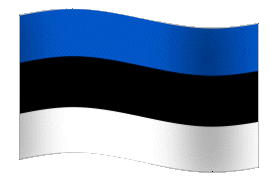 August 20 is the most important holiday of the Republic of Estonia - the Day of the Restoration of Independence. In order to celebrate this holiday, Estonia has come a very long and difficult path.
August 20 is the most important holiday of the Republic of Estonia - the Day of the Restoration of Independence. In order to celebrate this holiday, Estonia has come a very long and difficult path.
The lands located on the coast of the Baltic Sea, from which it was possible to control the passage of ships to the Gulf of Finland, to the Aland Islands, have always attracted warlike conquerors. Therefore, practically, throughout its history, Estonia was ruled by German knights, Russian tsars, or Soviet Russia.
Events that took place on August 21 in the world, in different years
1192 - In Japan, the power of the emperor was replaced by the power of the shogun - commander in chief.
1525 - After a year of fruitless searching for a route from North America to Asia, the Portuguese navigator Esteban Gómez returned home.
1560 - 13-year-old Danish boy Tycho Brahe studied law at the University of Copenhagen. But on this day the predicted complete solar eclipse, and this fact so impressed the teenager that after daytime classes he began to study at night starry sky. And he became the most famous astronomer of his time.
August 22 - Day of the State Flag of the Russian Federation
 August 22 marks the holiday of one of the symbols of Russian statehood - the State Flag. First, the Decree on the State Flag, which has three colors - white, blue and red, was adopted by an emergency session of the Supreme Soviet of the RSFSR, wishing to separate itself from the red banner of the USSR. Then the President of Russia adopted a special Decree No. 1714 of August 20, 1994 "On the Day of the State Flag of the Russian Federation."
August 22 marks the holiday of one of the symbols of Russian statehood - the State Flag. First, the Decree on the State Flag, which has three colors - white, blue and red, was adopted by an emergency session of the Supreme Soviet of the RSFSR, wishing to separate itself from the red banner of the USSR. Then the President of Russia adopted a special Decree No. 1714 of August 20, 1994 "On the Day of the State Flag of the Russian Federation."
 According to the Federal Law of March 13, 1995 "On the Days of Russia's Military Glory", August 23 marks the victory of the Soviet troops in the Battle of Kursk. This is the day of military glory of Russia. Perhaps the Battle of Kursk is the most grandiose battle not only of the Great Patriotic War, but of the entire Second World War, which decided its outcome.
According to the Federal Law of March 13, 1995 "On the Days of Russia's Military Glory", August 23 marks the victory of the Soviet troops in the Battle of Kursk. This is the day of military glory of Russia. Perhaps the Battle of Kursk is the most grandiose battle not only of the Great Patriotic War, but of the entire Second World War, which decided its outcome.
 Ukraine celebrates its Independence Day on August 24th. On this day in 1991, the then Supreme Soviet of the Ukrainian SSR adopted the Act on the Declaration of Independence of Ukraine. This Act was then confirmed in a referendum held on December 1, 1991.
Ukraine celebrates its Independence Day on August 24th. On this day in 1991, the then Supreme Soviet of the Ukrainian SSR adopted the Act on the Declaration of Independence of Ukraine. This Act was then confirmed in a referendum held on December 1, 1991.
Any schoolchild knows that Kievan Rus, formed in the 9th century, became the basis for several Slavic states. After the collapse Kievan Rus into several principalities, the dominant place was occupied by the Moscow kingdom. And the true Ukrainian lands created their own state. But under the pressure of the Poles and Lithuanians, they were forced to become part of the Muscovite kingdom.
August 25 - Soldier's Day in Brazil
In Brazil, the military is loved no less than in Russia. Brazil also has a holiday similar to the Russian holiday 23 February. Only it is celebrated on August 25 and is called Soldier's Day. August 25 was chosen as a holiday in honor of the birth of the outstanding military and statesman of Brazil, Marshal Luis Alves de Lima e Silva.
August 27 - Russian Cinema Day
 On August 27, Russians celebrate the Day of Russian Cinema. The date of the Film Day celebration has changed several times. In Soviet times, the dates were both October 1 and November 1. Then the holiday was called the Day of Soviet Cinema, then it was renamed, simply, Cinema Day. In post-Soviet times, they wanted to combine Russian Cinema Day with International Cinema Day, which is celebrated on December 28. But filmmakers opposed this, because then the national film festival would disappear. N.S. Mikhalkov, elected to the post of Chairman of the Union of Cinematographers of Russia, proposed to celebrate Cinema Day at the end of September, during the presentation of the Golden Eagle award of the National Russian Academy of Cinematographic Arts and Sciences. But this date did not suit the legislators. A compromise solution was the date of August 27, which is celebrated annually as the Day of Russian Cinema.
On August 27, Russians celebrate the Day of Russian Cinema. The date of the Film Day celebration has changed several times. In Soviet times, the dates were both October 1 and November 1. Then the holiday was called the Day of Soviet Cinema, then it was renamed, simply, Cinema Day. In post-Soviet times, they wanted to combine Russian Cinema Day with International Cinema Day, which is celebrated on December 28. But filmmakers opposed this, because then the national film festival would disappear. N.S. Mikhalkov, elected to the post of Chairman of the Union of Cinematographers of Russia, proposed to celebrate Cinema Day at the end of September, during the presentation of the Golden Eagle award of the National Russian Academy of Cinematographic Arts and Sciences. But this date did not suit the legislators. A compromise solution was the date of August 27, which is celebrated annually as the Day of Russian Cinema.
 In 1995, a referendum was held in the Republic of Kazakhstan, at which the Constitution of the country was adopted. The Constitution guarantees the citizens of Kazakhstan democratic freedoms, defines Kazakhstan as secular, welfare state. At the same time, the main values of the state are the rights and freedoms of a person, his life. The day of the referendum, at which the Constitution of the country was adopted, has become a national holiday - Constitution Day. On May 18, 2007, the Constitution was amended to clarify the state structure of the republic. Since that day, Kazakhstan has been established as a unitary state with a presidential-parliamentary form of government. Since Constitution Day is a holiday, many events, both solemn and entertaining, take place on this day.
In 1995, a referendum was held in the Republic of Kazakhstan, at which the Constitution of the country was adopted. The Constitution guarantees the citizens of Kazakhstan democratic freedoms, defines Kazakhstan as secular, welfare state. At the same time, the main values of the state are the rights and freedoms of a person, his life. The day of the referendum, at which the Constitution of the country was adopted, has become a national holiday - Constitution Day. On May 18, 2007, the Constitution was amended to clarify the state structure of the republic. Since that day, Kazakhstan has been established as a unitary state with a presidential-parliamentary form of government. Since Constitution Day is a holiday, many events, both solemn and entertaining, take place on this day.
 On August 31, 1991, the Supreme Council of the Republic of Kyrgyzstan adopted the "Declaration on State Independence of the Republic of Kyrgyzstan". This declaration stated that the Republic of Kyrgyzstan is a sovereign, independent, democratic state. The adoption of the "Declaration of State Independence" legally secured the independence of Kyrgyzstan, and now all actions government agencies Kyrgyzstan moved to another legal area. The Republic of Kyrgyzstan announced that in international relations it will adhere to the norms of international law, strive for friendship and cooperation with all countries, and will fulfill all its obligations.
On August 31, 1991, the Supreme Council of the Republic of Kyrgyzstan adopted the "Declaration on State Independence of the Republic of Kyrgyzstan". This declaration stated that the Republic of Kyrgyzstan is a sovereign, independent, democratic state. The adoption of the "Declaration of State Independence" legally secured the independence of Kyrgyzstan, and now all actions government agencies Kyrgyzstan moved to another legal area. The Republic of Kyrgyzstan announced that in international relations it will adhere to the norms of international law, strive for friendship and cooperation with all countries, and will fulfill all its obligations.
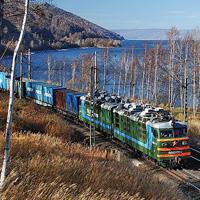 Railways are the main transport arteries of any country. They connect cities and towns, industrial enterprises and factories. In Russia, Railway Worker's Day is celebrated on the first Sunday of August. But the date of the celebration of the Day of the railwayman often changed. Initially, this date was timed to coincide with the birthday of Nicholas I, at which the mass construction of railway lines began. Until 1917, i.e. before the October Revolution, the Railwayman's Day was celebrated on June 25th. After the October Revolution, all royal holidays were abolished, including the Railwayman's Day. But after some time, at a meeting in Moscow in 1936, it was decided to revive the celebration of the Day
Railways are the main transport arteries of any country. They connect cities and towns, industrial enterprises and factories. In Russia, Railway Worker's Day is celebrated on the first Sunday of August. But the date of the celebration of the Day of the railwayman often changed. Initially, this date was timed to coincide with the birthday of Nicholas I, at which the mass construction of railway lines began. Until 1917, i.e. before the October Revolution, the Railwayman's Day was celebrated on June 25th. After the October Revolution, all royal holidays were abolished, including the Railwayman's Day. But after some time, at a meeting in Moscow in 1936, it was decided to revive the celebration of the Day
August 1 (July 19, old style) all Orthodox Christians celebrate the day of remembrance of St.Seraphim of Sarov ( in the world Prokhor Moshnin). Born July 19, 1759 in a merchant family. At an early age, Prokhor fell from the bell tower of the temple under construction, but miraculously survived. As a teenager, he became very seriously ill. According to legend, the Mother of God appeared to the boy's mother in a dream and promised to heal her son. When the child was attached to the icon Mother of God Omens, he recovered quickly.
Even in his youth, Prokhor made a pilgrimage to Kyiv to worship the Caves saints. Here he received an order that he should be tonsured a monk in the Sarov Hermitage. Following the order, Prokhor first became a novice of the elder Joseph in the Sarov Monastery, and in 1786 he took tonsure and was ordained a hierodeacon. Since then, his name sounded like Seraphim, which means "fiery." Seven years later, Seraphim of Sarov was ordained to the rank of hieromonk.
In 1794, the hieromonk decided to retire to a cell on the Sarovka River, five kilometers from his monastery. Seraphim of Sarov led an ascetic life, prayed for a long time, for which, according to the life of the saint, God rewarded him with the gift of healing.
In 1807 Seraphim of Sarov took a vow of silence for three years. In 1810 he returned to the monastery, but went into seclusion until 1825. After the end of the shutter, he received the laity, helping them heal from various ailments. Among its visitors were noble persons, including the sovereign Alexander I .
The saint based his life on the basis of Holy Bible and works of the Holy Fathers. He especially honored the holy champions and zealots of Orthodoxy, and he urged everyone who came to keep an unshakable faith in God. The monk lovingly persuaded many schismatics to abandon their delusions. In 1833 Reverend Seraphim Sarovsky with peace went to the Lord and was found already lifeless in a kneeling prayer in front of the icon of the Mother of God "Tenderness", before which he prayed all his life. But even after his death, many miracles were performed on the grave of the monk, which were carefully collected by their witnesses, and in 1903 the monk was canonized as a saint.
The knowledge that any trials come to us from God, tireless feat and inexplicable, all-encompassing love for every person made the monk a great ascetic, whose name shone throughout the country. Today, believing people continue to flock to the relics of the saint, who, through the prayers of the monk, receive help from God.
On August 1 (according to the new style), 1903, Seraphim of Sarov was canonized. The incorruptible relics of the monk were opened with great honors and placed in a specially prepared shrine.
August 11914 - Russia entered the First World War
The official reason for the outbreak of the First World War (or as it was then called (before the revolution) - the Great Patriotic War) was the assassination of the Austrian Archduke Franz Ferdinand, which was committed by the Serbian student Gavrila Princip, a member of the terrorist organization Mlada Bosna. Taking advantage of the situation, Austria-Hungary and Germany began a general mobilization, and Germany did it covertly. One month after the murderAustria-Hungary declared war on Serbia. The Russian government immediately declared that it would not allow the occupation of the Slavic state. To which Germany put forward an ultimatum, if Russia continues to mobilize, then Germany will be forced to declare war on her. This happened the very next day, August 1st. At the same time, the Germans invaded Luxembourg, providing their army with access to the French border. On August 3, Germany declared war on France and Belgium, which forced England to enter the war, acting as a guarantor of Belgian neutrality. On August 6, Austria-Hungary declared war on Russia. So, swiftly and irreversibly began the First World War. Later, Japan, Italy, Bulgaria, and the Ottoman Empire joined it.
The war, which lasted more than four years - until November 11, 1918 - caused the collapse of four empires at once - Russian, Austro-Hungarian, Ottoman and German.
August 2 - Ilyin's day
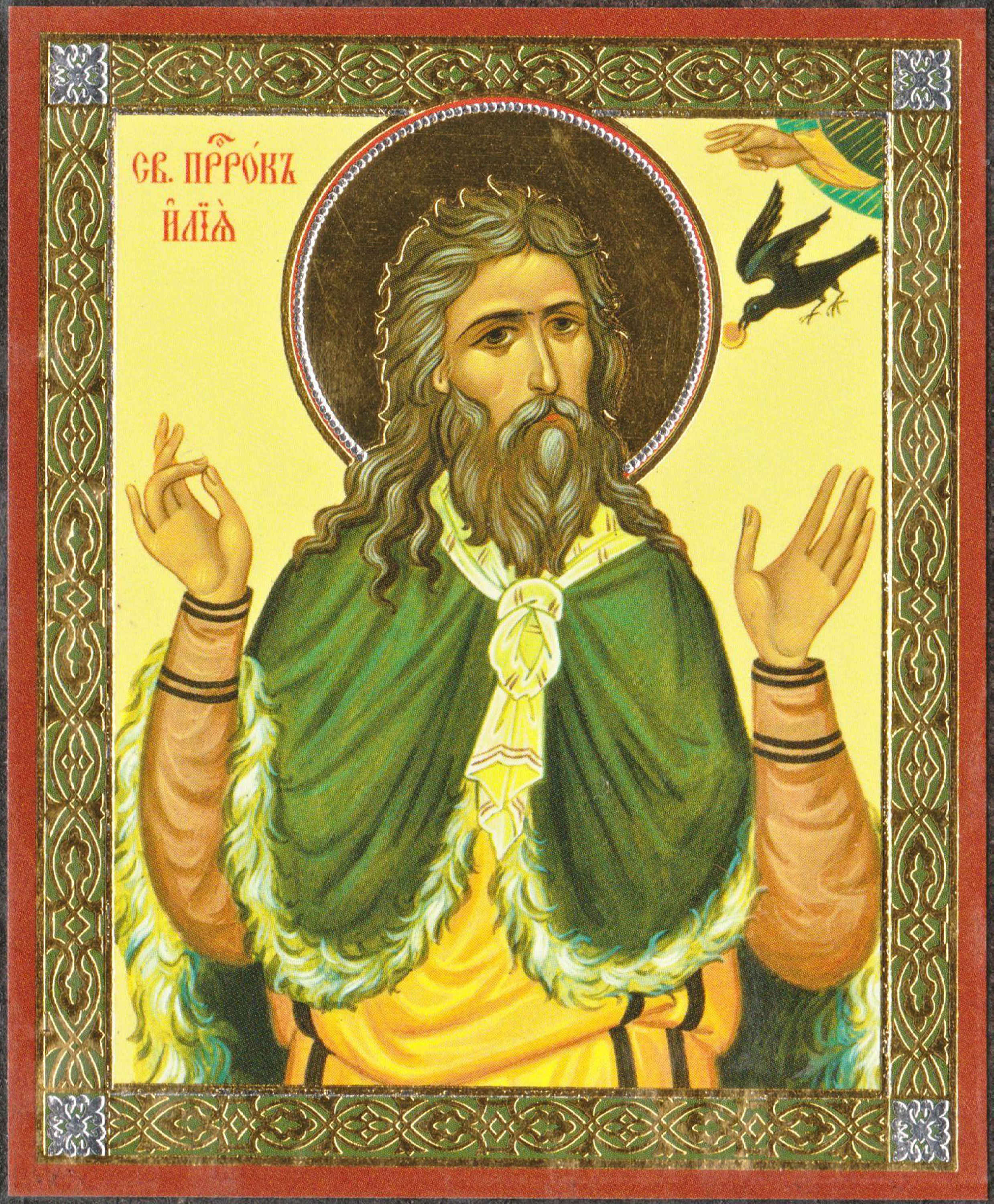
One of the revered holidays in Rus', on this day they honored Elijah the prophet, who was born inIX century BC in the State of Israel. Elijah was a zealous Jew and fought against idolatry, and at that time King Ahab ruled in Israel, whose wife Jezebel tried to establish a cult of the pagan god Baal. What the prophet could not allow in any way, he wanted to preserve the true shrines of the Jews. Once Ilya personally executedpagan priests who arranged a sacrifice on Mount Carmel.Endowed with a special gift, the prophet began to perform miracles in order to show the royal family what was true and what was false. Once he sent a three-year famine to the country of wicked rulers. By such actions, Elijah greatly angered Queen Jezebel and she vowed to kill him, but the prophet hid in the desert.Later, when he returned to the kingdom of Israel, he nevertheless humbled the ruler of Ahab. It is believed that Elijah was taken to Heaven alive: “suddenly a fiery chariot and fiery horses appeared” and took the prophet away. Thanks to this image, the saint received the nickname Ilya the Thunderer among the people: they said that it was he who, rushing across the sky in a fiery chariot and trying to strike the unclean serpent, lets out thunder and lightning. In the old days in Rus', Ilyin's day was arranged religious processions and prayed to the prophet for rain or, conversely, for clear weather - depending on what was needed. In addition, according to beliefs, rainwater collected at this time relieved both the evil eye and eye diseases.
August 3, 1943 - The guerrilla operation "Rail War" began
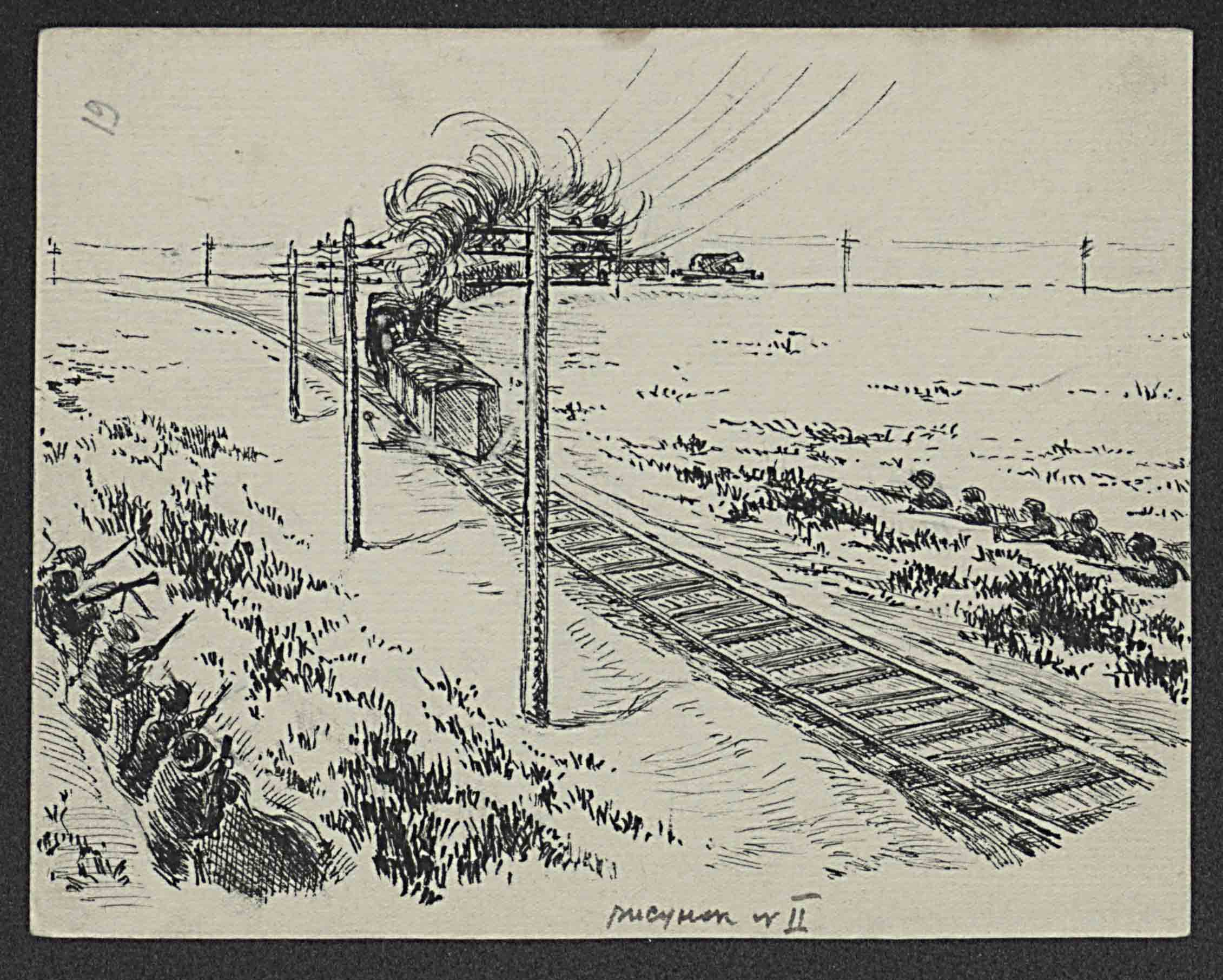
In spring and autumn, heavy rains washed out the roads, so the rails were the only all-weather way to supply weapons, food, and emergency reinforcements. Of course, transport aviation also performed all these functions, but it could not transport heavy cargo or military equipment. Therefore, the uninterrupted operation of the railways was a key factor in the conduct of the war. BesidesNazi propaganda widely advertised the future operation near Kursk, promising that "the summer offensive will decide the fate of Europe."Guided by this fact, the Soviet command decided to strike at the railway tracks used by the German bloc. The role of performers was assigned to partisan detachments. And already 9June 1943, a resolution was adopted: "On the destruction of the enemy's railway communications by the method of rail warfare." During the crash of trains near Mogilev, unfamiliar powerful tanks were found among the equipment dumped down a slope. These were "Tigers", intended for battles near Kursk. A real rail war unfolded on the night of August 3, assault partisan detachmentshit the German units defending the railway infrastructure.After the destruction of the security garrisons, demolition workers took over. On a vast territoryfront length over 1,000 km and depth up to 700 kmin fact, thousands of explosions were heard at the same time.
As a result of a month and a half campaign, approximately 215,000rails, which amounted to over 1,500 km of tracks. In some sections, railway communication was interrupted for a month. Enemy traffic was reduced by 35-40%. The invaders suffered huge losses in locomotives and wagons. Only the partisans of Belarus wereover 800 trains were derailed, 180 railway bridges were destroyed.
Partisan detachments opened, in fact, a second front, thereby making a significant contribution to the victory of our troops in the Battle of Kursk and the success of the summer-autumn military campaign of 1943 as a whole.
August 4 - Day of Remembrance of the Myrrhbearer Equal-to-the-Apostles Mary Magdalene

Mary Magdalene, forever included in gospel story, was born in a small town called Magdala. According to legend, she was beautiful and led a sinful life, as the Gospel says - “The Lord cast out seven demons from her,” after which the girl began life from scratch. Mary became a disciple of Jesus and was faithful to him both in the days of glory and in the days of humiliation. She was present during the days of the burial of the Lord and the resurrection. After these events, Mary, along with other women, remained all the next day at rest, for the day of that Sabbath was great, which coincided that year with the feast of Easter.
Further, her life continued in Italy, in the city of Rome, where, together with other ascetics, she continued her reverence and promotion of the gospel sermons. She selflessly served the Church with her labors, daily exposed to danger. According to legend, Mary was in Rome until the arrival of the Apostle Paul, then, at an advanced age, she left for Ephesus to the holy Apostle John. He wrote the 20th chapter of his Gospel from her words. It was in Ephesus that Mary Magdalene completed her earthly life.
In the 15th century, her relics were transferred to Constantinople, the capital of the Byzantine Empire, and placed in the temple of the monastery of St. Lazarus. During the beginning of the Crusades, the relics were transferred to Italy under the altar of the Roman Lutheran Cathedral. Now part of the relics is located in France near the city of Marseille, where a temple was erected in honor of St. Mary Magdalene.
The Orthodox Church celebrates the memory of Mary Magdalene on the second Sunday after Easter.

During the Russo-Polish war (1654-1667), to cover all military expenses, the Russian Tsar Alexei Mikhailovich decided to carry out a monetary reform. It consisted in the fact that instead of silver coins they began to issue copper coins, equated to the value of silver. This led to the mass production of counterfeit coins, a sharp rise in prices and the depreciation of the ruble. Discontent among the population increased. On the night of August 4, 1662, July 25, according to the old calendar, “thieves' sheets” were pasted all over Moscow, listing the names of all those responsible for the financial crisis, fell into disgrace:the boyars Miloslavsky, who headed the orders of the Great Treasury, the head of the order of the Grand Palace, the roundabout Rtishchev, the head of the Armory, the roundabout Khitrovo, the clerk Bashmakov, Shorin, Zadorin and many others. On the same morning, a mass uprising began, the dissatisfied went to the village of Kolomenskoye, where Tsar Alexei Mikhailovich was at that moment, demanding to extradite everyone who was on the "thieves' sheets". To which the boyars promised the rebels to reduce taxes and conduct an investigation at their request. Believing the promises, the participants of the uprising went back, but on the way the first wave of the rebels met with the second, as a result they united and all together moved to the royal residence. Approaching the gates, the townspeople resumed their demands, threatening that if the boyars were not handed over, they themselves would take them in the palace.
But during this time, the king managed to gather archers. On his orders, they attacked the crowd, armed only with sticks and knives. During the fight, about 900 citizens were killed, and the next day about 20 people were hanged. However, the copper money that served as a direct cause for the rebellion was abolished by the royal Decree in April 1663.
August 5, 1675 -Celebration in honor Pochaev icon Mother of God
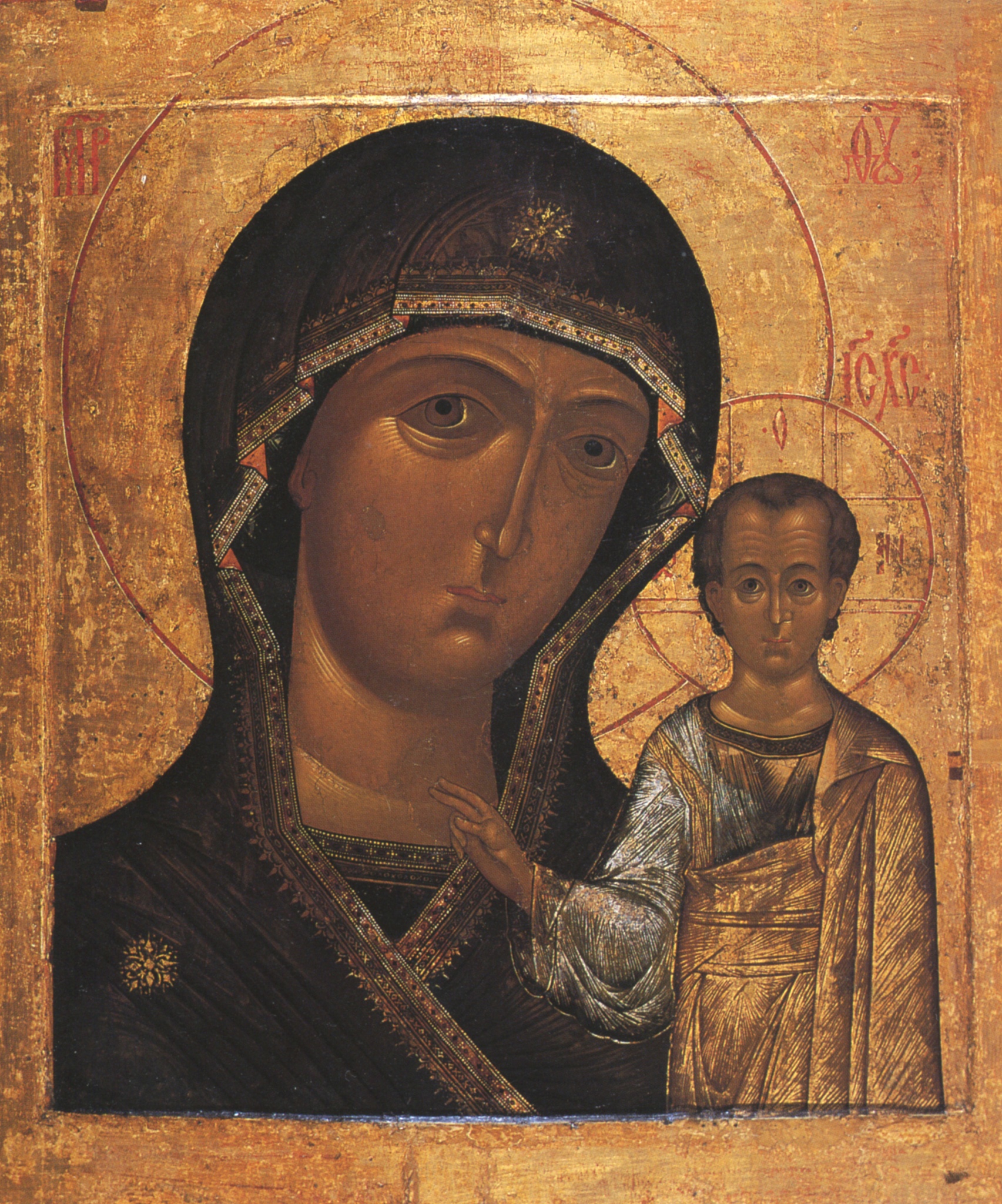
Known throughout the Slavic world and one of the most revered shrines of the Russian Orthodox Church, the miraculous icon of the Pochaev Mother of God. It is called miraculous for a reason, the icon has more than once helped believers recover from ailments, many of such cases are attested in monastic books.The celebration in honor of the Pochaev Icon of the Mother of God was established in memory of the deliverance of the Dormition Pochaev Lavra from the Turkish siege on July 20-23, 1675. During the Zbarazh war with the Turks (1674-1696), the troops of Khan Nurredin surrounded the Pechersk monastery from three sides. The flimsy monastery fence could not withstand the siege, so Abbot Joseph Dobromirsky persuaded the brethren and laity to seek help from the Most Holy Theotokos and the Monk Job of Pochaev. With the first words of the "Choose Governor" over the temple, the Most Pure Mother of God herself suddenly appeared with heavenly angels holding drawn swords. The Monk Job was near the Mother of God, bowing to Her and praying for the protection of the monastery. The Tatars mistook the heavenly host for a ghost, in confusion they began to shoot at the Most Holy Theotokos and the Monk Job, but the arrows returned back and wounded those who let them go. Horror seized the enemy. In a stampede, not dismantling their own, they killed each other.
The icon has been kept for more than 400 years in the monastery of the Ternopil region of Ukraine, the Pochaev Lavra.
August 6 - Day of the blessed princes Boris and Gleb, in the holy Baptism of Roman and David (1015)

Holy believersmartyr princesBoris and Gleb (in Holy Baptism Roman and David) were the younger sons of the Holy Equal-to-the-Apostles Prince Vladimir. Brought up in Christian piety, they were distinguished by mercy and kindness of heart, imitating the example of their father, who was merciful and sympathetic to the poor, sick, and destitute. In the internecine struggle that broke out after the death of their father in 1015, they were killed by their elder brother Svyatopolk the Accursed. The life of the holy martyrs was sacrificed to the main Christian good deed - love. The holy brothers showed that evil cannot be repaid with evil, even under the threat of death. Blessed Princes Passion-Bearersthey did not want to raise a hand against their brother, but the Lord Himself took revenge on the power-hungry tyrant. Boris and Gleb became the first Russian saints, they were canonizedmartyrs-passion-bearers, making them intercessors of the Russian land and heavenly helpers of the Russian princes.August 6, 1945 -Day of Remembrance for the Victims of the Atomic Bombing of Hiroshima

Early morning american bomberB-29dropped an atomic bomb on the Japanese city of Hiroshima - this is how the first atomic bomb in the history of mankind exploded. The explosion killedand about 200 thousand people went missing, about 160 thousand people were injured and exposed to radioactive irradiation. The vast majority of the dead were civilians. Three days after this tragedy, on August 9, 1945, the Americans dropped an atomic bomb on the second Japanese city of Nagasaki.Survivors of the bombing were 16 times more likely to die of leukemia and 8 times more likely to suffer from cancer. The atomic bombs detonated more than half a century ago over Hiroshima and Nagasaki continue to kill, and every year the list of victims increases by several hundred people. The events held on the anniversary of the atomic bombings of Hiroshima and Nagasaki are now aimed at ensuring that new generations can understand the full horror experienced by the victims of the atomic catastrophe.
August 61961 - Soviet cosmonaut German Titov made the second space flight in history
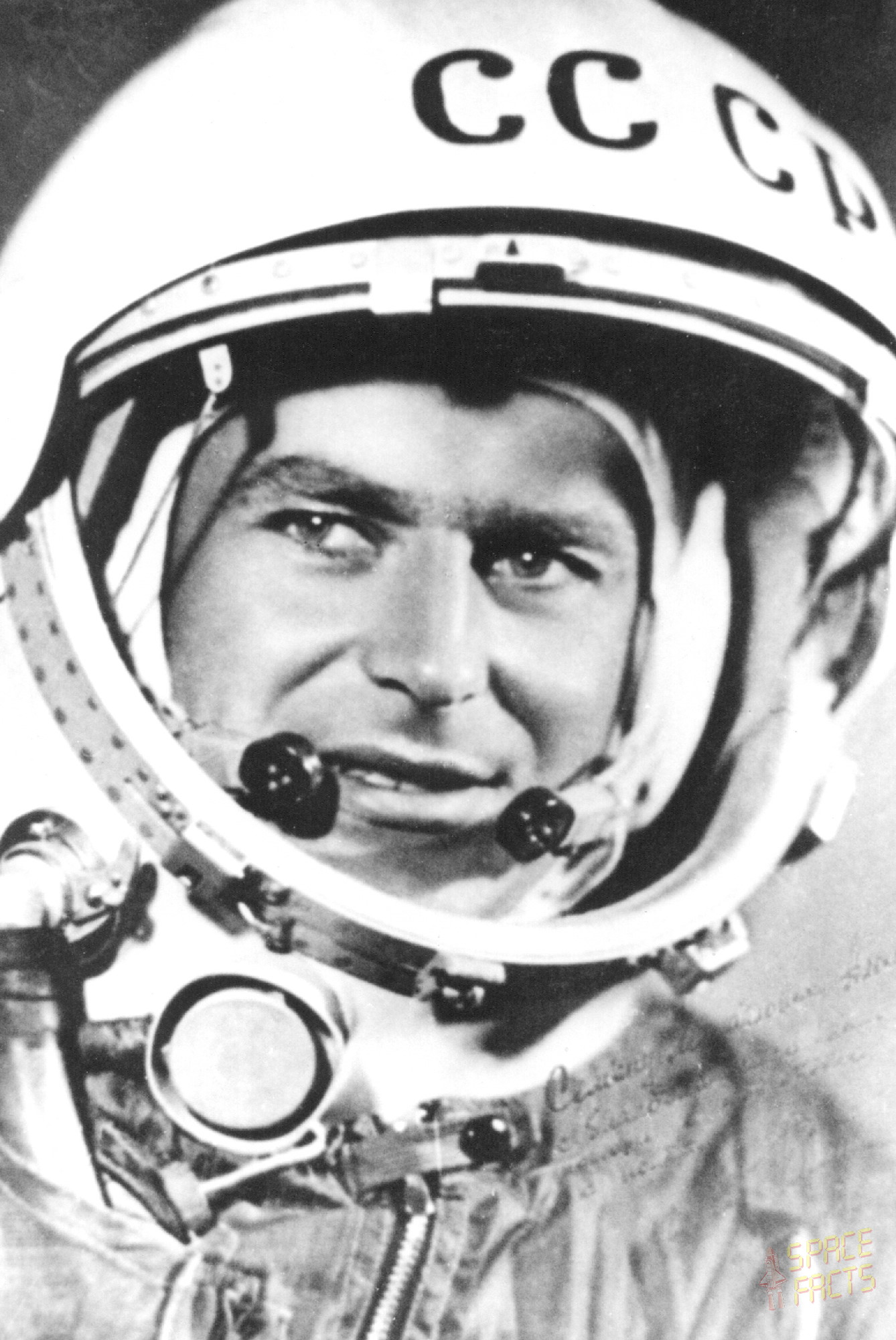
On this day the whole world knewabout a new space triumph - the world's first daily flight into space, and it was made by the Soviet cosmonaut German Titov.His flight lasted 25 hours 11 minutes, during which time he circled the Earth 17 times on the Vostok-2 spacecraft.
The landing point of German Titov was in the Saratov region. At an altitude of 7 km, the catapult went off, the parachute opened. Looking around, the cosmonaut saw with horror that he was being carried to the railway, and a train was rushing across, like in a movie. Return from space and die under the wheels of a train ... Titov landed 5 km from the railway tracks.
German Titov always considered his space flight "not a feat, but his duty, the duty of a soldier, a citizen of the Soviet Union, his duty, work."
8 August2000 - A terrorist act was committed in Moscow in underpass under Pushkinskaya Square
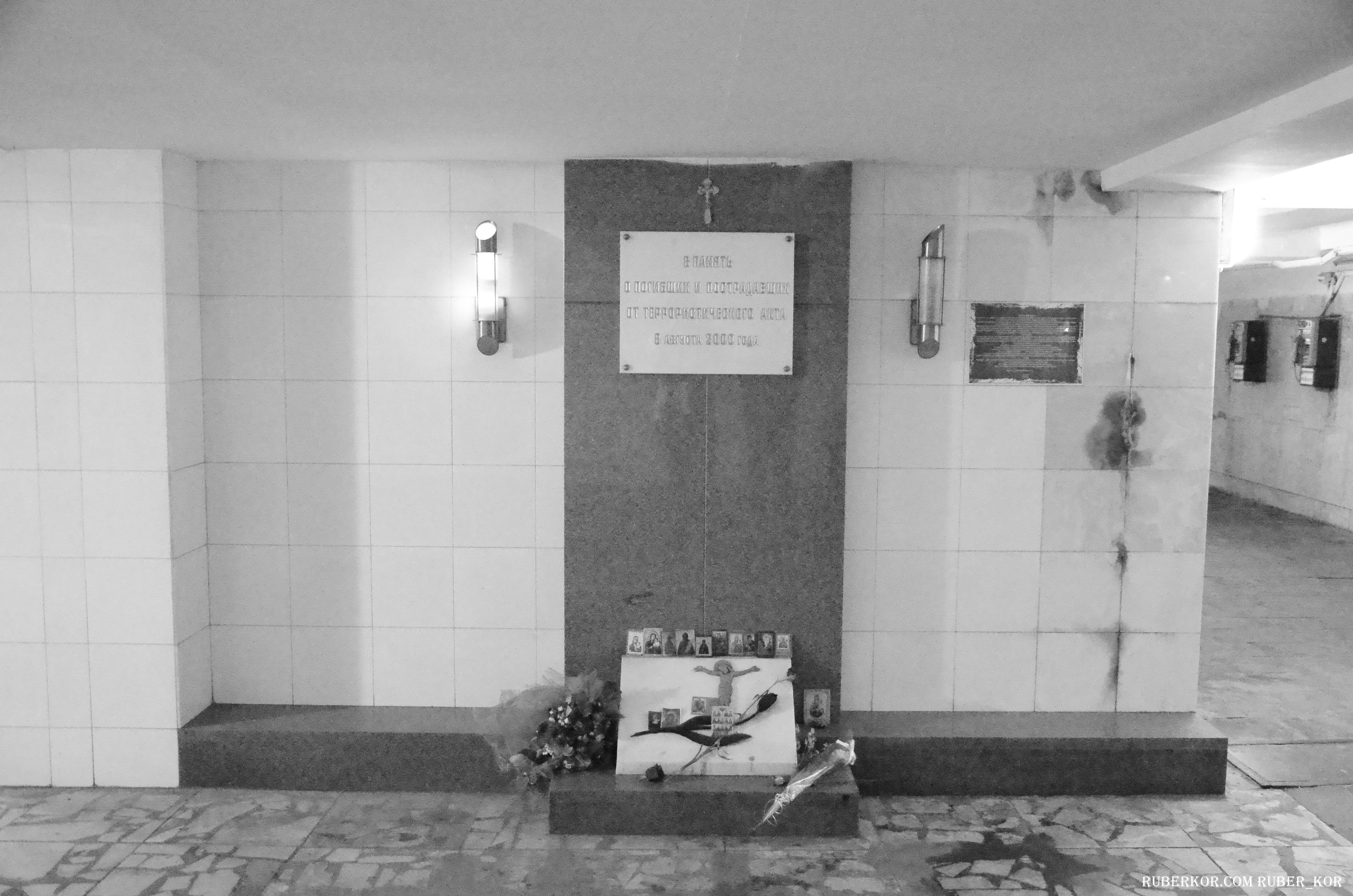
At about six o'clock in the evening, almost at "rush hour", a powerful explosion thundered in the underground passage under Pushkinskaya Square. A little later it turned out that the explosion was caused by a homemade device with a capacity of 800 grams, in TNT equivalent. The bomb was left by terrorists in a shopping bag next to the pavilion where they sold watches. As a result of the attack, 13 people were killed and about 60 people were injured.
August 9 -Memorial Day of the Great Martyr and Healer Pantoleon

Great Martyr and HealerPantoleonBorn in the city of Nicomedia (Asia Minor), in the family of a noble pagan Eustorgius and the holy Christian Evvula. From childhood, she tried to instill faith in Christ in her son, but, unfortunately, she ended her earthly life early. father gavePantoleonto a pagan school, and then taught him the art of medicine from the famous physician Euphrosynus.
Youngpantoleon,possessing good behavior, eloquence, extraordinary beauty and medical talent, was introduced to Emperor Maximian (284-305), who decided to leave him as a court physician.
At the same time, the holy martyrs Yermolai, Yermipp and Yermocrates, who survived after the burning of 20,000 Christians in the Church of Nicodemus (303), secretly made their way to Nicodemia and settled. One of them has seena good-looking young man and perspicaciously saw in him the chosen vessel of the grace of God and called Pantoleon to him. During the conversation, the holy martyr told him about the basic truths Orthodox faith. From that time on, Pantoleon began to visit Hieromartyr Yermolai every day and listen with pleasure to what God's servant revealed to him about Jesus Christ.
Once Pantoleon saw a dead boy lying on the road, bitten by a viper. Showing compassion, Pantoleon began to ask the Lord to resurrect the dead and kill the poisonous reptile. He firmly decided that if his prayer was fulfilled, he would become a Christian and receive holy Baptism. The child immediately came to life, and the echidna at the same moment shattered into pieces. After this incident, Pantoleon received the sacrament of baptism. In Nicodemia, Pantoleon was a famous good doctor, and one day a blind man was brought to him, whom no one could heal. “Light will return to your eyes the Father of light. True God, the saint said to him, “in the name of my Lord Jesus Christ, who enlightens the blind, see!” The blind man immediately received his sight, and with him the father of the saint, Evstorgius, spiritually received his sight, and both joyfully accepted holy Baptism. The fact that Pantoleon could heal anyone aroused the envy of other doctors, and they decided to inform the emperor that Saint Pantoleon was a Christian and was treating Christian prisoners.
The ruler tried to persuade the saint to refute the denunciation, but instead, in front of the emperor, Pantoleon healed the patient with the help of prayer.
Enraged, Maximian ordered the execution of Pantoleon and give him the most severe torment. “Lord Jesus Christ! Show me at this moment, give me patience so that I can endure the torment to the end! the saint prayed and heard a voice: “Do not be afraid, I am with you.” The Lord appeared to him “in the form of Presbyter Yermolai” and strengthened him before suffering. They hung the Great Martyr Pantoleon on a tree and tore the body with iron hooks, burned it with candles, stretched it on a wheel, threw it into boiling tin, plunged it into the sea with a stone around its neck. However, in all the tortures, the courageous Pantoleon remained unharmed. By order of the emperor, the holy great martyr Pantoleon was brought to the circus and thrown to be torn to pieces by wild beasts. But the animals licked his feet and pushed each other away, trying to touch the saint's hand. Seeing this, the audience rose from their seats and began to shout: “Great is the Christian God! May the innocent and righteous youth be released!” Enraged, Maximian ordered the soldiers to kill with swords all those who praised the Lord Jesus, and even to kill the animals that did not touch the holy martyr. Seeing this, Saint Pantoleon exclaimed: “Glory to Thee, Christ God, that not only people, but also animals die for You!” Then the emperor ordered that Pantoleon's head be cut off, but when the executioner touched his neck with a sword, the sword became soft as wax and did not inflict any wound. Struck by the miracle, the soldiers shouted: “Great is the Christian God!” At this time, the Lord once again revealed himself to the saint, calling him Panteleimon (which means "many-merciful") instead of the former name Pantoleon.
11th August -Nativity of St. Nicholas the Wonderworker

Nicholas the Wonderworker was born in 258in the city of Patara, not far from Lycia, on the southern coast of the Asia Minor peninsula. For a long time, his parents Feofan and Nona could not have children, for which they constantly prayed to God. One fine day their prayers were heard, the Lord sent them a son. In gratitude, they vowed to dedicate their only child to the service of God. From the very first minutes of his life, Nikolai began to work miracles - during childbirth, he healed his mother from a serious illness. Another miracle was that during his baptism, the infant Nikolai stood on his feet for three hours, supported by no one, thereby paying honor to Holy Trinity. Also, from infancy, he began to fast and drank mother's milk only on Wednesdays and Fridays. Growing up, Nicholas studied the Divine Scriptures, spent his days in prayer, showed mercy to his neighbors, and came to the aid of those who were suffering.
During his lifetime, St. Nicholas performed many miracles - more than once he saved those drowning in the sea, led them out of captivity and imprisonment in dungeons, healed people from ailments and even resurrected them, fought for the truth. He lived a worthy life and, having reached a ripe old age, died peacefully.
Saint Nicholas has long been revered by many peoples. Celebration of the Nativity of St. Nicholas the Wonderworker initially began in local churches in Asia Minor, where
The saint served as an Archbishop, and in the homeland of his parents - in Patara. Then, at the time of the Crusades, this holiday could spread throughout the Nicaean Empire and from there penetrate into Rus', where this saint was honored from ancient times. It is known that in XIIIcentury, the tradition of celebrating his Christmas in Russian Orthodox Church already existed, and in Veliky Novgorod there was a monastery dedicated to the Nativity of St. Nicholas. There is still evidence that one of the surviving church services dedicated to this holiday was composed at the time of Patriarchate Nikon in 1657. However, during the reign of Catherine the Great, the church-wide celebration of the Nativity of St. Nicholas the Wonderworker in Russia was abolished. Several centuries later, the celebration was resumed, and in honor of the feast of the Nativity of St. Nicholas, a troparion and kontakion, known from ancient times in the liturgical life of the Russian Orthodox Church, were composed.
August 12, 2000 - The catastrophe of the nuclear submarine "Kursk"
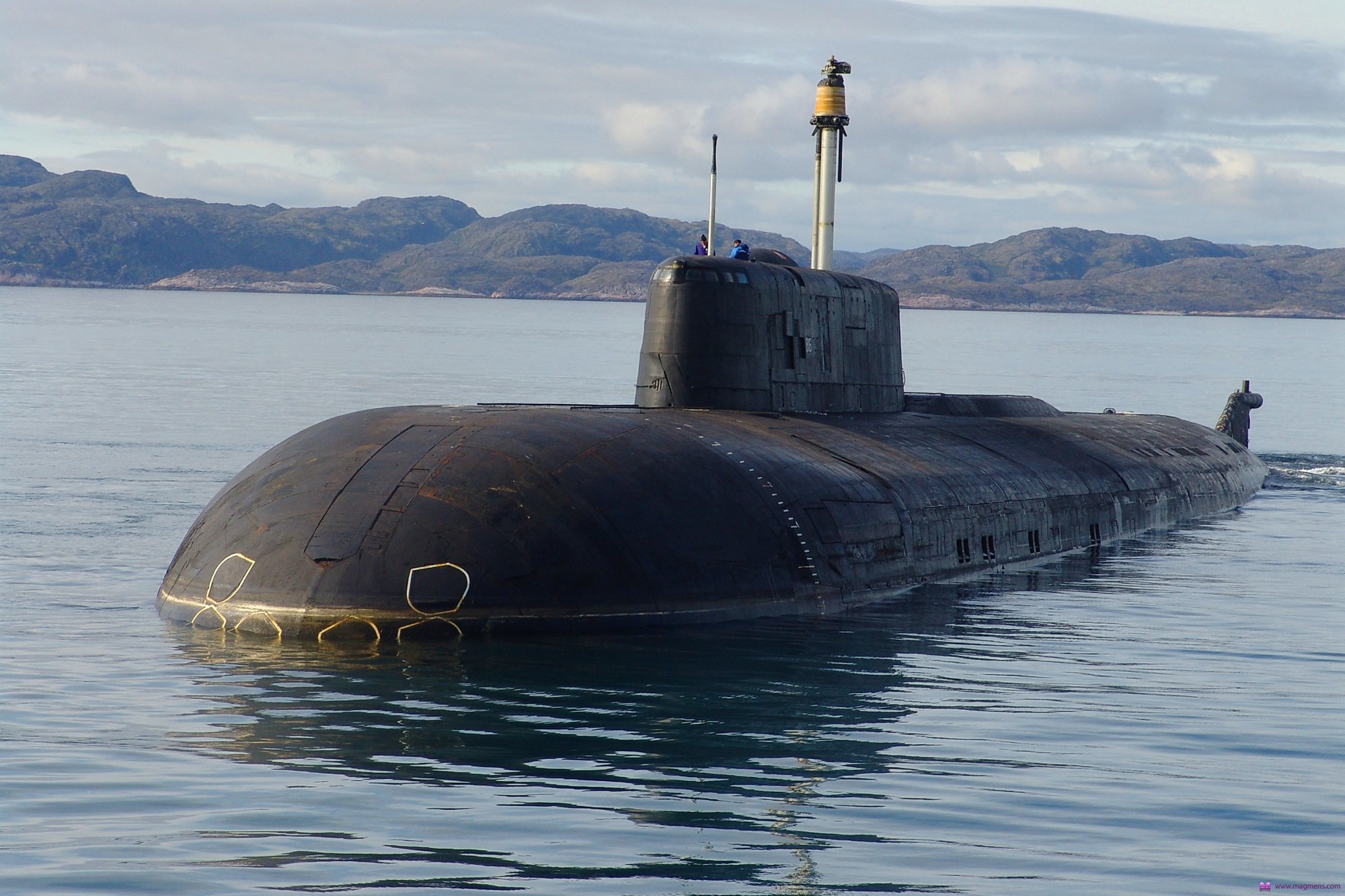
One of the most tragic dates at the beginning of the third millennium, the disaster occurred during exercises in the Barents Sea. SubmarineAPRK K-141 "Kursk"sank at a depth of 108 meters, 118 people died on board.The remains of most of them were later brought to the surface and buried. On August 26, 2000, the Decree of the President of Russia was signed to perpetuate the memory of his crew.
From 1995 to 2000, the submarine was part of the Russian Northern Fleet. In March 1995, the rector of the Kursk Theological Seminary, Bishop of Belgorod Vladyka John, consecrated the nuclear submarine. Then he presented the crew with a copy of the 700-year-old icon of the Kursk Mother of God, and each submariner with small icons depicting Saint Nicholas, the patron and protector of sailors. In 1999, during the NATO operation against Yugoslavia, Kursk conducted covert surveillance of the US Navy aircraft carrier Theodore Roosevelt, aircraft from which attacked Yugoslavia. During the Mediterranean campaign, the Kursk worked out 5 conditional attacks on real targets.
According to unofficial data, on the day of the sinking of the submarine, two NATO boats were secretly watching the exercises in the Barents Sea. One of them accidentally collided with our atamahod. On the "Kursk" they played a combat alarm. At this time, the second NATO boat, having heard the noise of the opening torpedo hatches of the Russian submarine, delivered a preemptive strike with a torpedo that landed in the central compartment. This is evidenced by a hole in the body of the Kursk. This version is also supported by the fact that after the accident, the entire northern aviation was raised into the air by alarm, which for several days was looking for an unknown submarine ...
12th of August -Russian Air Force Day

The first Russian air force appeared thanks to the last Emperor Nicholas II, it was he who ordered the formation of the first aviation unit in 1912 by his decree. Thus he created a perfect new genus troops - the Imperial Air Force.
August 12 is considered to be the beginning of the creation of Russian military aviation. At the dawn of the history of the Air Force, the main function of aviation was reconnaissance. After the appearance of the famous "Ilya Muromets" by Sikorsky, long-range aviation began to develop.
The Air Force of the USSR had no equal in terms of the number of combat aircraft, because the "air shield" was supposed to reliably cover the "tank sword" and "large fleet" of the Land of the Soviets. In the 70 post-war years, Soviet aviation has gone from wartime plywood piston aircraft to fourth-generation supersonic aircraft.
Russian Air Force Day is celebrated annually on the third Sunday of August.
August 16, 1941 - Order No. 270 of the Headquarters of the Supreme High Command of the Soviet Red Army was issued
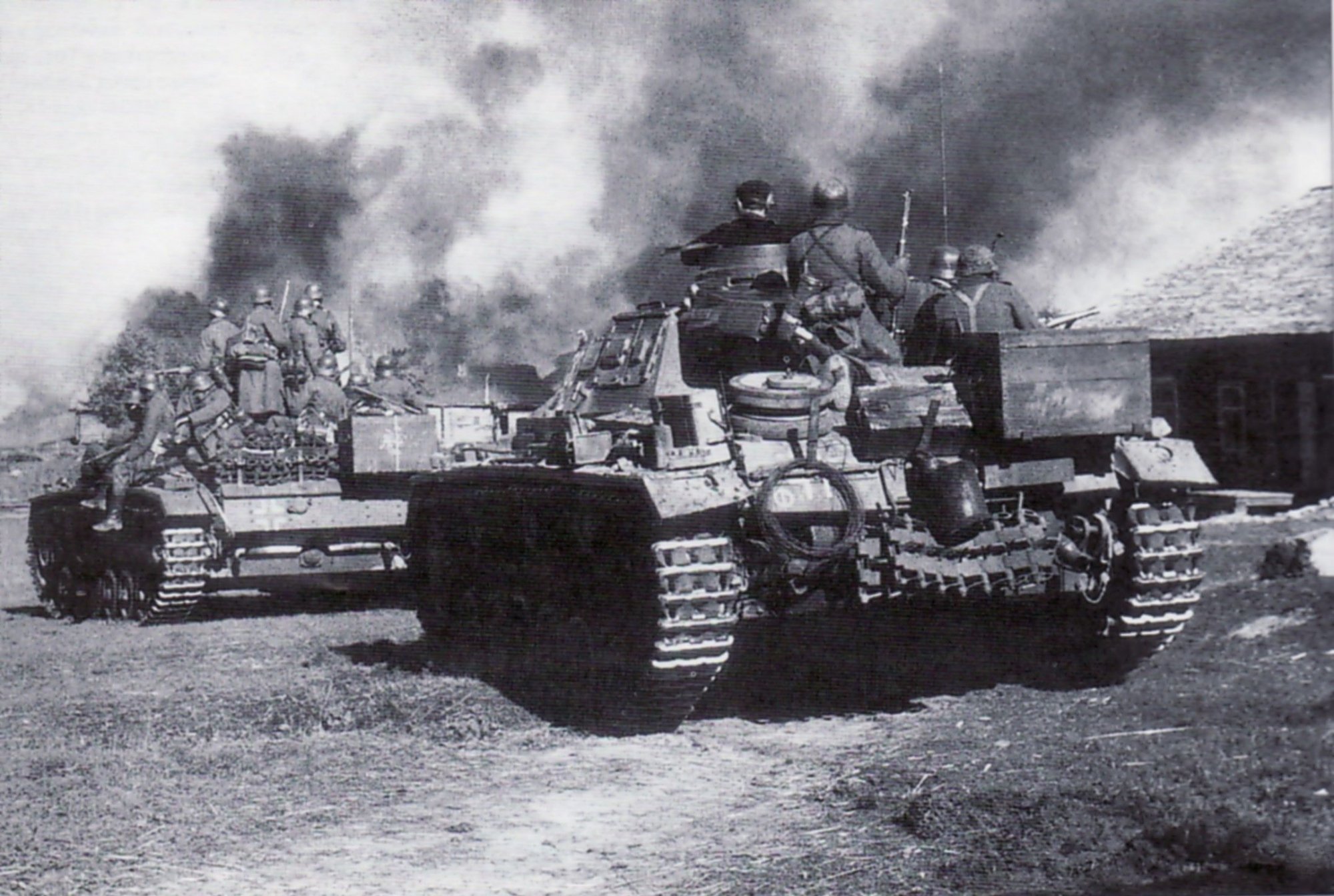
During the Great Patriotic War, Order No. 270 of the Headquarters of the Supreme High Command “On the responsibility of military personnel for surrendering and leaving weapons to the enemy” was issued, according to which each soldier had to fight to the end, it was forbidden to surrender. In case of violation of the order, a person was declared a deserter or a traitor to the Motherland and was subject to immediate execution.
The order was signed by Chairman of the USSR State Defense Committee Joseph Stalin, Deputy Chairman Vyacheslav Molotov, Marshals of the Soviet Union Semyon Budyonny, Kliment Voroshilov, Semyon Timoshenko, Boris Shaposhnikov and General of the Army Georgy Zhukov.
August 191960 - The Soviet spacecraft "Vostok" with the dogs Belka and Strelka on board made a daily flight with a return to Earth
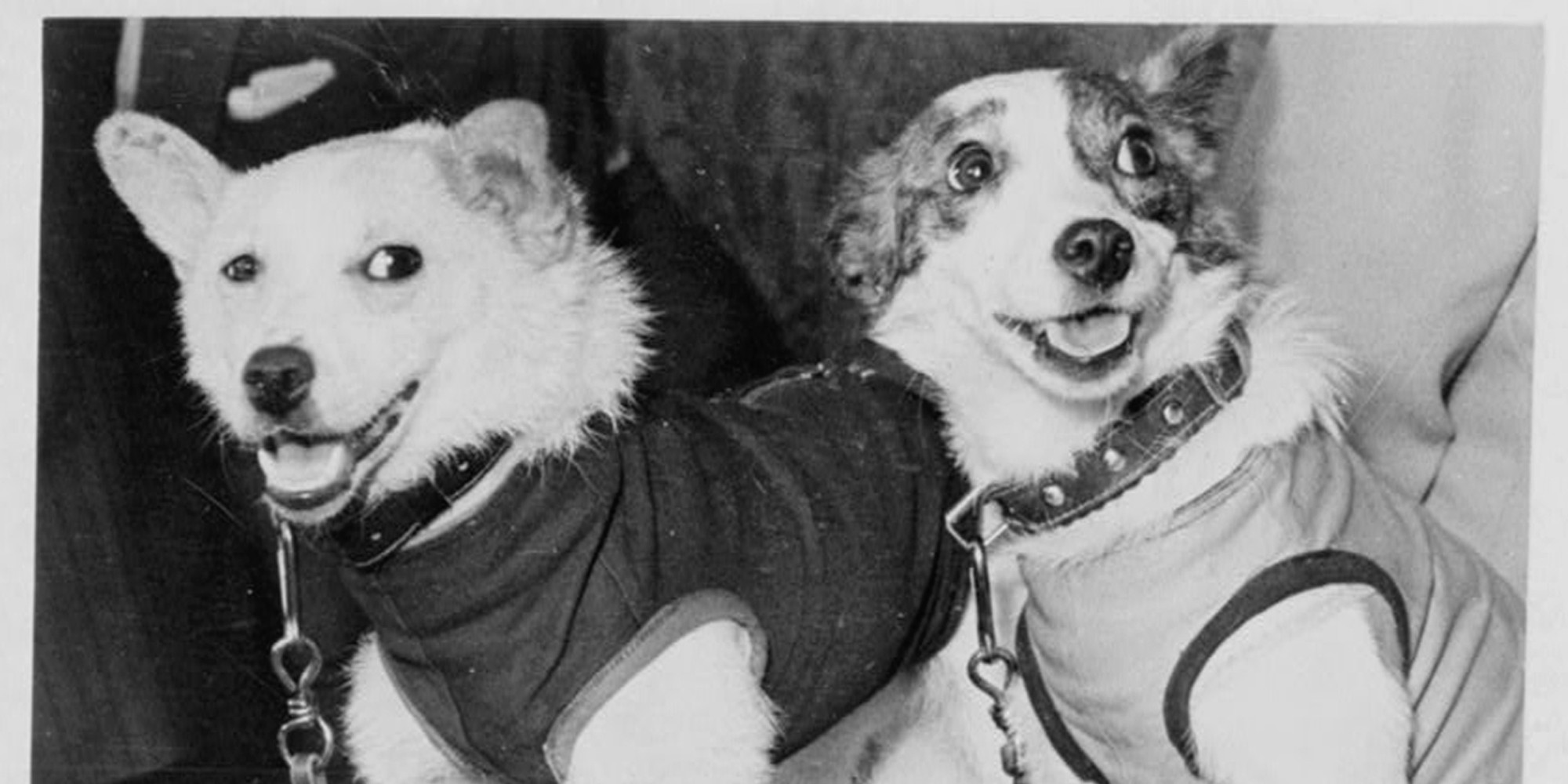
The first living creatures sent into space were two Soviet mongrel dogs Belka and Strelka. They made an orbital space flight lasting more than 25 hours, flying around the Earth 17 times, after which they returned home safe and sound. Both dogs were doing great. The arrow left behind numerous offspring. And one of her puppies - Fluff - was presented to the wife of the American president, Jacqueline Kennedy.
It is known that Belka and Strelka were doubles of the main composition of the astronaut dogs Chaika and Chanterelle, whodied on a bad startJuly 28th 1960 . At the 19th second of flight, the side block of the first stage collapsed at the launch vehicle, as a result of which it fell and exploded.
August 23 -Day of military glory of Russia - Day of victory of the Soviet troops in the Battle of Kursk (1943)

During the Great Patriotic War, the Battle of Kursk became decisive; it lasted from July 5 to August 23, 1943. It was this battle that destroyed the plans of the Nazi command to conduct a major offensive.in the summer of 1943, seize the strategic initiative and turn the tide of the war in their favor.
As a result of the battle, the Third Reich lost 30 divisions, including seven tank divisions, over 500 thousand soldiers and officers, 1.5 thousand tanks, more than 3.7 thousand aircraft, 3 thousand guns. The losses of the Soviet troops surpassed the German ones - they amounted to 863 thousand people, including 254 thousand irretrievable. Near Kursk, the Red Army lost about six thousand tanks.
More than 100,000 soldiers, officers and generals of the Red Army were awarded orders and medals for their courage and heroism in the Battle of Kursk, and 180 especially distinguished soldiers were awarded the title of Hero of the Soviet Union.
August, 26th1382 - Tatar Khan Tokhtamysh captured and burned Moscow

Two years after the victory of Rus' on Kulikovsky, the Tatar Khan Tokhtamysh set off for Moscow with a large army. On the 4th day of the siege, he captured, plundered and burned the city. This time, the Russian princes could not unite.
The Grand Duke of Moscow Dmitry Donskoy did not come out to fight, he disappeared with his family in Kostroma. The defense of Moscow was led by the young Lithuanian prince Ostei. For two days Muscovites stubbornly defended themselves. Then Tokhtamysh decided to take Moscow by cunning, sending Nizhny Novgorod princes Vasily Kirdyapa and Semyon Dmitrievich to negotiate. The princes swore that Tokhtamysh would pardon the Muscovites if they surrendered. August 26, 1382 Moscow surrendered. The insidious Khan, of course, did not fulfill his promise. Many people were killed, the city was plundered. After that, the Tatars took Pereyaslavl, Vladimir, Yuryev, Zvenigorod, Mozhaisk and other cities near Moscow, imposing tribute on them.
August 26, 1395 - Moved to Moscow from Vladimir Vladimir icon Holy Mother of God.

The Vladimir icon of the Mother of God was painted inIcentury by the apostle Luke. He wrote it on a board from the table at which Jesus Christ and the Mother of God had previously sat. B XIIcentury, the icon was presented to Grand Duke Yuri Dolgoruky. Later, his descendant Andrei Bogolyubsky took the icon to the Assumption Cathedral in Vladimir.The icon has repeatedly shown its miracles to the world. In 1395, she saved Moscow from the invasion of Khan Timur. When there was no longer any hope of defeating the enemy hordes, the Grand Duke of Moscow Vasily Dmitrievich sent to Vladimir for miraculous icon. The journey to Moscow lasted 10 days. At this time, people were kneeling on the sides of the road and praying. In Moscow, the icon was met on August 26. At this time, Tamerlane was sleeping in a tent and saw in a dream a high mountain, from which saints with golden rods descended to him. Above them in the air, illuminated by the divine light and surrounded by the host of heaven, stood a woman radiating light. The wise men told the khan that in a dream a sign had been sent to him from above, that the Mother of God herself stood up to defend the Russian land. The chroniclers wrote: “And Tamerlane fled, driven by force of the Blessed Virgin". In honor of this event, the Sretensky Monastery was built at the meeting place of the icon, and the Vladimir Icon of the Mother of God moved to Moscow and was installed in the cathedral built in honor of the Assumption of the Most Holy Theotokos. Before her, kings were anointed to the kingdom and high hierarchs were elected. In Soviet times, the icon was placed in Tretyakov Gallery. In September 1999, the icon of the Vladimir Mother of God was transferred to the church of St. Nicholas at the Tretyakov Gallery.
August 291479 - Assumption Cathedral of the Moscow Kremlin consecrated

Assumption Cathedral was the first stone church in Moscow. He is now the oldestfrom fully preserved buildings in Moscow. Since 1991 it has been the cathedral of the Moscow Patriarch and All Rus'.
The temple was built by an Italian architectAristotle Fioravanti and repeats the outlines of the Assumption Cathedral of Vladimir. After construction, it became the main cathedral of the Muscovite state, the tomb of Moscow metropolitans and patriarchs, as well as the coronation site of Russian tsars. It was here in 1547 that Ivan IV the Terrible was first crowned. In 1625, the Robe of the Lord, sent as a gift to Tsar Mikhail Fedorovich by the Persian Shah Abbas I, was transferred to the cathedral. In 1812, the cathedral was desecrated and plundered by the Napoleonic army, although the most valuable shrines were evacuated to Vologda. Of the tombs of the saints, only the shrine of Metropolitan Jonah survived. The cathedral was re-consecrated on August 30, 1813 by Bishop Augustin (Vinogradsky) of Dmitrovsky.
August 2 - Day of the Airborne Forces (Day of the Airborne Forces)The airborne troops - "winged infantry", "blue berets" - with what epithets were not awarded to the guards - paratroopers, but always, at all times and under any circumstances, the strength, courage and reliability of people living by the principle: "No one, except us!" The history of the Airborne Forces (VDV) originates. August 2, 1930 - then, at the exercises of the Air Force of the Moscow Military District near Voronezh, a paratrooper unit consisting of 12 people was parachuted. This experiment allowed military theorists to see the prospect of the advantages of paratrooper units, their enormous capabilities associated with the rapid coverage of the enemy through the air. Since that time, the Paratrooper's Day has been celebrated. Already at the beginning of 1933, special-purpose aviation battalions were formed in the Belorussian, Ukrainian, Moscow and Volga military districts. By the summer of 1941, the staffing of five airborne corps of 10 thousand people each was completed. The airborne troops have written many bright pages in the history of the armed forces. Their valor and courage, selfless devotion to the Motherland are forever covered with unfading glory. And today, paratroopers inspire respect and admiration, both among veterans and young people who are preparing to serve in the army. They are where it is most dangerous, where high combat skills and excellent physical training, self-sacrifice and courage are needed. "Blue Berets" are always at the forefront - be it a peacekeeping mission or participation in an anti-terrorist operation.

Railways always play a special role in the life of every country. They were and remain the main transport artery linking the cities together. Railway Day is celebrated annually on the first Sunday of August. This professional holiday was established in Russia in 1896 and was timed to coincide with the birthday of Emperor Nicholas I, who began the construction of railways. During his reign, the first pleasure railway was built to Tsarskoe Selo, the first all-Russian highway from St. Petersburg to Moscow. Railwayman's Day in those years, until 1917, was celebrated on June 25th. After the October Revolution of 1917, the holiday was forgotten for almost twenty years. The tradition of honoring railway workers was revived in the USSR only in 1936. By a Government Decree of July 28, 1936, the day of the professional holiday of railway workers was established on July 30. Later, his celebration was moved to the first Sunday of August.

In accordance with Federal Law No. 32-FZ "On the Days of Military Glory and Memorable Dates of Russia" dated March 13, 1995, August 9 marks the Day of Military Glory of Russia - the Day of the first in Russian history naval victory of the Russian fleet under the command of Peter I over the Swedes at Cape Gangut in 1714. The battle began about two o'clock in the afternoon and lasted more than two hours. The battle was extremely tenacious. At the stage of rapprochement, intensive artillery fire was carried out from both sides. After a firefight from the ship's cannons, handguns came into play, and then the boarding began. The Swedes only lost 361 people killed. On the shore near the place of the battle, 127 Russians who died in the battle in the Rilaks Fjord were buried. In this battle, Peter managed to create superiority in forces in the main direction, concentrating eleven galleys against the enemy’s flagship at once, and by striking at the flanks he excluded part of the enemy’s artillery from action. Ehrenskiöld decided that a frontal attack would follow from the Russian side, but he miscalculated. Peter outplayed the Swedish flagship.

674 years ago Reverend Sergius Radonezh founded a monastery. According to the chronicles, Sergius of Radonezh and his brother Stefan founded a monastery near the town of Radonezh. Even during the life of the saint, the monastery was greatly transformed thanks to the efforts of the Smolensk Archimandrite Simon. The monks erected a spacious church, built cells, a refectory and other buildings. In the 14th-17th centuries the monastery became the largest cultural center Rus'. Writers Epiphanius the Wise lived and worked here - the author of the Life of Sergius of Radonezh, Maxim Grek, Avraamiy Palitsyn, painters Andrei Rublev and Daniil Cherny, carver Ambrose. The monastery played an important role in political life countries: he supported the unifying policy of the Moscow Grand Dukes, participated in the fight against the Tatar-Mongol yoke, and in 1608-1610 - with the Polish intervention. Over time, a picturesque ensemble of buildings developed on the territory of the monastery, including more than 50 buildings and structures, including the Trinity and Assumption Cathedrals. After the October Revolution of 1917, the Trinity-Sergius Lavra was closed, a historical and art museum was created during the trips, since 1940 - a museum-reserve. However, after the Great patriotic war in 1946 the revival of the monastery began. Today, the Trinity-Sergius Lavra occupies an outstanding place in the life of the Russian Church and is the largest center of spiritual education and culture.

Air Force Day is celebrated in Russia on August 12 in accordance with Decree of the President of the Russian Federation No. 549 of May 31, 2006 "On the establishment of professional holidays and memorable days in the Armed Forces of the Russian Federation." This holiday has received the status of a memorable day. On August 12, 1912, an order was issued by the Russian Military Department, according to which the Staff of the aeronautical unit of the Main Directorate of the General Staff was put into operation. To commemorate this event, August 12 is considered to be the beginning of the creation of Russian military aviation. At the dawn of the history of the Air Force, the main function of aviation was reconnaissance. After the appearance of the famous "Ilya Muromets" by I. I. Sikorsky, long-range aviation began to develop. The Air Force of the USSR had no equal in terms of the number of combat aircraft, because the "air shield" was supposed to reliably cover the "tank sword" and "large fleet" of the Land of the Soviets. In the 65 post-war years, Soviet aviation has gone from war-era plywood piston aircraft to fourth-generation supersonic aircraft, fighting in the skies of Korea, Vietnam, Egypt and Afghanistan.

In order to reveal to His disciples this Heavenly spiritual glory that will follow temporary suffering, the Lord was transfigured in front of His disciples Peter, James and John on Mount Tabor - His face shone like the sun, His clothes became white like light. Two Old Testament prophet- Moses and Elijah - and talked with the Lord about His imminent departure. By celebrating the Transfiguration of the Lord, the Church solemnly confesses and glorifies the union of Divinity and humanity in the person of Jesus Christ. By His Transfiguration, the Lord deigned to protect His disciples from despondency and raised them to the highest hope in the midst of the disasters that were to befall them in the world. The Feast of the Transfiguration of the Lord belongs to the 12 largest Orthodox holidays. People call this day the Second Savior. This traditional holiday harvest - in churches they consecrate the fruits of the earth, that is, apples, pears, plums. Apples are the most popular and honored, there is even a third name for the holiday - Apple Savior. The consecration of apples is most awaited by mothers whose children have died, and daughters whose mothers have died, since according to legend, apples can only be consumed by them after the Savior. In particular, beekeepers are preparing for this day. They need to consecrate the hives, treat their neighbors with honey, especially orphans, the weak and the destitute.

Russian Air Force Day is celebrated annually on the third Sunday of August on the basis of the Decree of the Presidium of the Supreme Council of the Russian Federation No. 3564-1 dated September 28, 1992 "On the establishment of the Russian Air Force Day holiday." Russian Air Force Day has two founding fathers: Nicholas II and Joseph Stalin. They are both in different years in August, orders significant for domestic aeronautics were issued. On August 12, 1912, the last Russian tsar ordered the formation of the first unit in the country, as we would now say, of the air force, under the Main Directorate of the General Staff, and to transfer all issues related to the development of a new kind of troops under its jurisdiction. And 11 years later, the “leader of all peoples” established a tradition in the Soviet Union to celebrate the Day of the USSR Air Fleet, starting on August 18, 1933. At present, the fleet of Russian aircraft includes more than 6 thousand units: 3930 aircraft and 2040 helicopters. The existing fleet of aircraft still satisfies the demand for transportation.
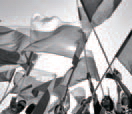
Russian Federation Every year on August 22, Russia celebrates the Day of the State Flag of the Russian Federation, established on the basis of Decree of the President of the Russian Federation No. 1714 of August 20, 1994 "On the Day of the State Flag of the Russian Federation". On August 22, 1991, the tricolor Russian flag was officially raised over the White House in Moscow for the first time, replacing the red flag with a hammer and sickle as the state symbol. For the first time, the white-blue-red flag was raised during the reign of Alexei Mikhailovich on the first Russian warship "Eagle". Peter I was recognized as the legitimate "father" of the tricolor. On January 20, 1705, he issued a Decree according to which a white-blue-red flag should be raised on all merchant ships, he himself drew a sample and determined the order of horizontal stripes. According to one version, white means freedom, blue - the Mother of God, patronizing Russia, red - sovereignty.

On August 23, in accordance with Federal Law No. 32-FZ of March 13, 1995 “On the Days of Military Glory (Victorious Days) of Russia”, the Day of Military Glory of Russia is celebrated - the Day of the defeat of the Nazi troops by the Soviet troops in the Battle of Kursk in 1943. The Nazi command planned to carry out a major offensive in the summer of 1943, seize the strategic initiative and turn the tide of the war in their favor. Having information about the preparation of the Nazi troops for the offensive, the Headquarters of the Supreme High Command decided to temporarily go over to the defensive on the Kursk salient and bleed the enemy strike groups during a defensive battle. Thus, it was planned to create favorable conditions for the transition of Soviet troops to a counteroffensive, and then to a general strategic offensive. Developing the offensive, the Soviet ground forces, supported from the air by air strikes of the air armies, as well as long-range aviation, by August 23, 1943, pushed the enemy back 140-150 kilometers to the west, liberated Orel, Belgorod and Kharkov. The Wehrmacht lost 30 selected divisions in the Battle of Kursk, including seven tank divisions, over 500 thousand soldiers and officers, 1.5 thousand tanks, more than 3.7 thousand aircraft, three thousand guns. The losses of the Soviet troops surpassed the German ones - they amounted to 863 thousand people, including 254 thousand irretrievable. Near Kursk, the Red Army lost about six thousand tanks. After the Battle of Kursk, the balance of forces on the front changed dramatically in favor of the Red Army, which provided it with favorable conditions for launching a general strategic offensive.

